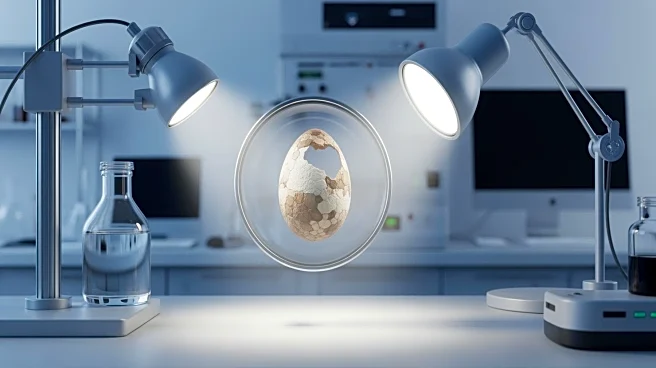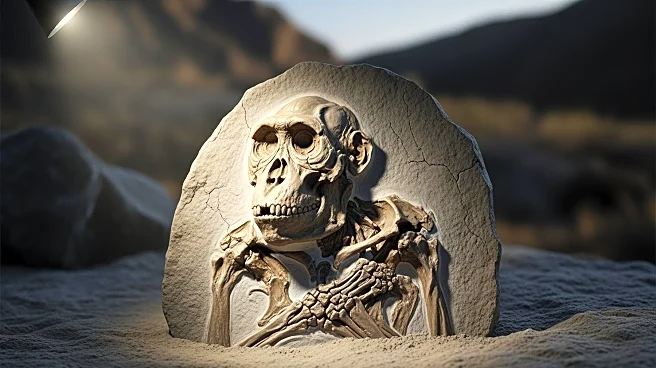What's Happening?
A research team has successfully applied U-Pb calcite geochronology to date fossilized dinosaur eggshells, offering a new method for age determination in terrestrial depositional settings. The study compared
results from Utah eggshells with published U-Pb tuff and detrital zircon ages, finding that the U-Pb calcite age of 94.7 ± 1.3/2.3 Ma is roughly 4.9% younger than the entombing ashfall U-Pb zircon CA-ID-TIMS ages. This method demonstrates accuracy and precision comparable to traditional zircon dating techniques. The research highlights the potential of eggshell biocalcite as a reliable geochronometer in Mesozoic and Cenozoic sedimentary basins, despite challenges such as diagenetic alteration and uranium uptake during initial burial.
Why It's Important?
The development of U-Pb calcite geochronology for dating dinosaur eggshells represents a significant advancement in paleontology and geochronology. This method provides a new tool for dating fossil deposits in regions lacking datable volcanic layers, such as the Gobi Basin in Mongolia and the Elliot Formation in South Africa. Accurate dating of these deposits can enhance our understanding of the timing and sequence of evolutionary events, contributing to broader scientific knowledge about Earth's history. The technique also offers potential applications in other fields, such as archaeology and geology, where precise age determination is crucial.
What's Next?
Further research is needed to refine the U-Pb calcite dating method and address challenges related to diagenetic alteration and uranium uptake. Cross-validation with other dating methods and geochemical screening will be essential to ensure reliability. The research team suggests collecting samples across the same stratigraphic horizon to diagnose potential analytical uncertainties. Continued investigations into the diagenesis of eggshells and methodological advancements are expected to improve accuracy and precision, potentially establishing fossilized eggshells as a significant geochronometer for dating critical fossil deposits worldwide.
Beyond the Headlines
The successful application of U-Pb calcite geochronology to dinosaur eggshells raises ethical and scientific considerations regarding the preservation and study of fossilized remains. As this method becomes more widely used, it may prompt discussions about the balance between scientific exploration and conservation of paleontological sites. Additionally, the technique's potential to uncover new insights into Earth's history could influence cultural perceptions of human origins and the interconnectedness of life on the planet.













